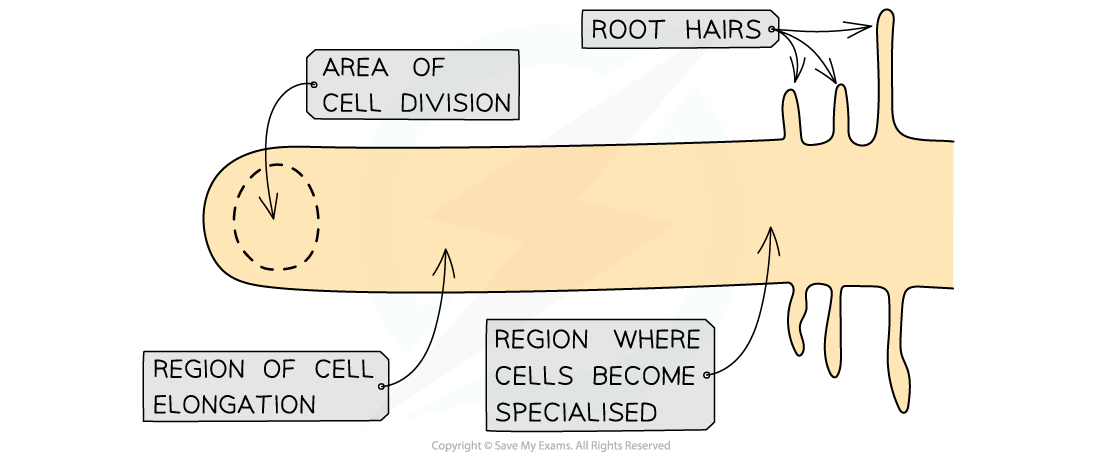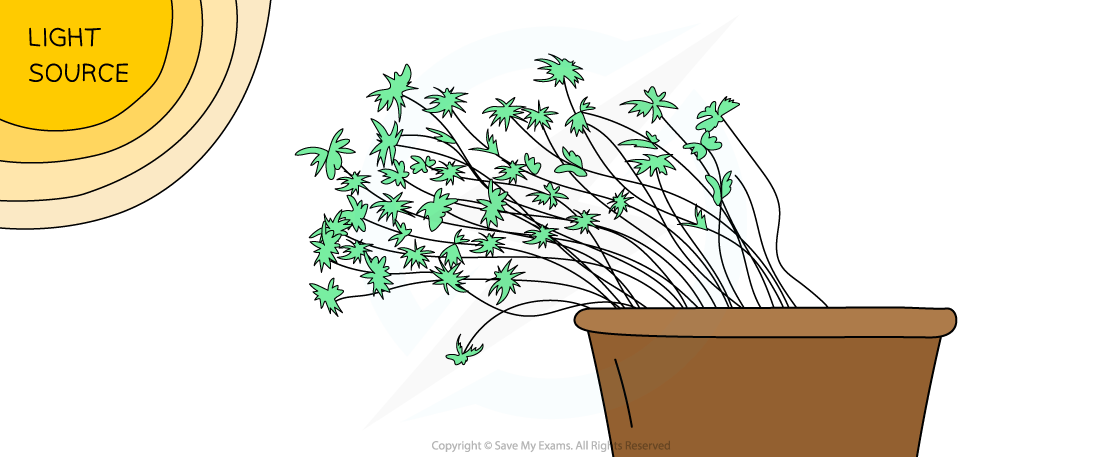- 翰林提供学术活动、国际课程、科研项目一站式留学背景提升服务!
- 400 888 0080
AQA A Level Biology复习笔记6.1.2 Growth Factors in Flowering Plants
Growth Factors in Flowering Plants
Growth responses in plants
- Just like animals, the survival of plants is dependent on their ability to respond to changes in their environment
- Some plants produce poisonous substances to defend against herbivore damage
- Trees in forests grow very tall so they can reach a light source
- Some flowers can close up at night to reduce water loss in a dry environment
- Unlike many animals, plants do not possess a nervous system and so they respond to stimuli in a different way
- Responses that involve plants growing against gravity or towards light occur due to uneven growth
- A seedling will bend and grow towards the light, this occurs because there is more growth on the shaded side than on the illuminated side
- This type of growth response towards a stimulus is referred to as a tropism
- Phototropism is a growth response to light
- Gravitropism is a growth response to gravity
- Tropisms can be positive or negative, causing the plant to grow towards or away from the stimulus
Growth factors
- The growth response of plants relies on chemical substances that are released in response to a stimulus
- These specific growth factors act in a similar way to the hormones that are found in animals
- The effect of specific growth factors is not as quick as that of an electrical nervous system but it still occurs at a substantial speed
- Phototropic responses have been detected in plant shoots within minutes of being exposed to light
- In flowering plants, specific growth factors move from the growing regions to other tissues, where they regulate the growth in response to a directional stimulus

The different growing regions of a root
Indoleacetic acid
- The first specific growth factor to be discovered in plants was indoleacetic acid (IAA)
- Other specific growth factors have been discovered since however their mechanism of action is still disputed
- IAA is synthesised at the tips of roots and shoots and it mainly affects the elongating region of a plant
- The elongating region is found just prior to the tip/area of cell division
- When IAA moves into the elongating region it binds to the protein receptors on the cell membranes
- Scientists are unsure of its exact mechanism but it is known that it lowers the pH by releasing hydrogen bonds
- The lowered pH breaks some of the bonds found between the microfibrils in cellulose cell walls
- This causes the cell wall to loosen and allows the cells to be more easily stretched when the turgor of the cells increases (by an increase of water being stored in the vacuole)
- By affecting the cell elongation of a root or shoot IAA influences the growth of the plant towards the stimulus
- For example, if the shaded side of a plant experiences greater cell elongation then that side of the plant will grow faster, causing it to bend towards the light

The parsley plant is growing towards the light source as a result of phototropism
转载自savemyexams

早鸟钜惠!翰林2025暑期班课上线

最新发布
© 2025. All Rights Reserved. 沪ICP备2023009024号-1








